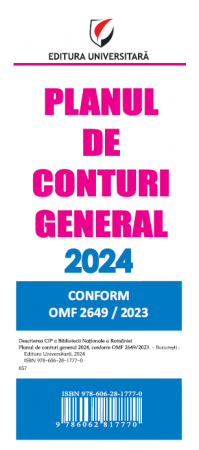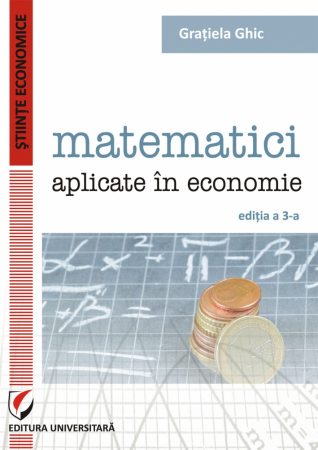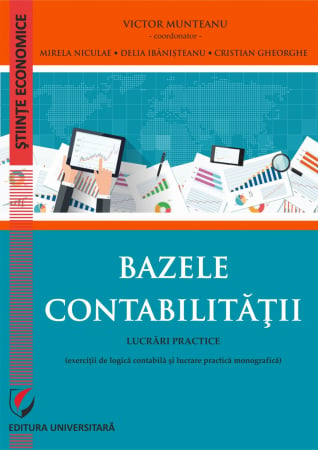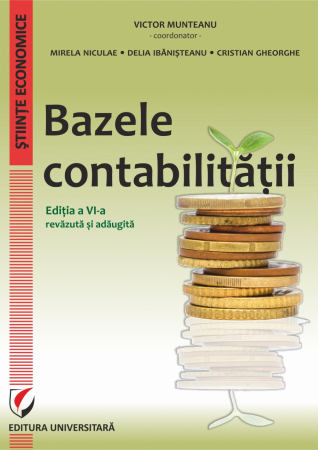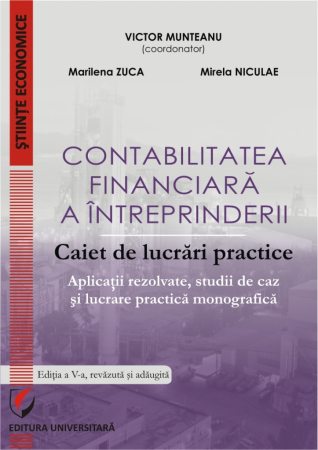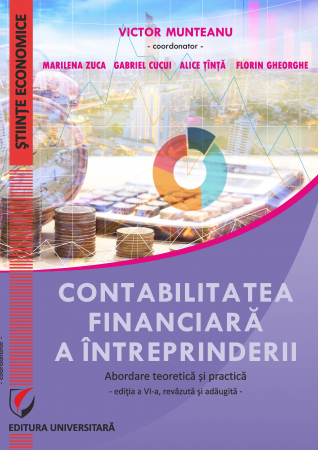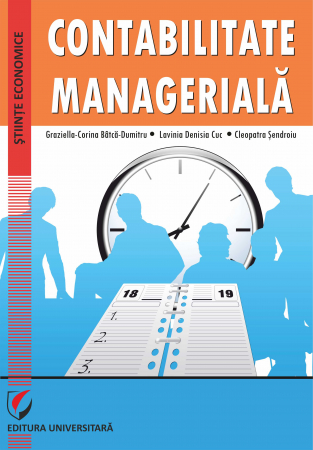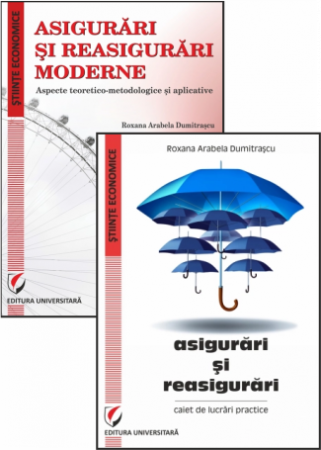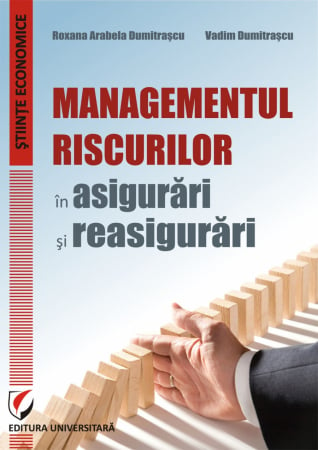Manuscript proposals: [email protected] / 0745 204 115 //// Tracking orders Individuals / Sales: 0745 200 357 / Orders Legal entities: 0721 722 783
Publisher: Editura Universitară
Author: Emilia Gabroveanu, Nicoleta Radneantu
ISBN: 978-606-28-0180-9
DOI: 10.5682/9786062801809
Publisher year: 2015
Edition: III, revizuita si adaugita
Pages: 105
Product Code:
9786062801809
Do you need help?
0745 200 357
- Description
- Download (1)
- Authors
- Content
- More details
- Reviews (0)
The paper is addressed to students of the Faculty of Domestic and International Tourism Economics.
The issue of practical works pursues two objectives:
a) familiarizing the first year students with the basic notions of the object of study of accounting, respectively, those regarding the elements of the patrimony;
b) consolidating the reasoning of the accounting analysis and knowing the procedures of the accounting method, respectively, of the working tools proper to accounting.
The issue of practical works pursues two objectives:
a) familiarizing the first year students with the basic notions of the object of study of accounting, respectively, those regarding the elements of the patrimony;
b) consolidating the reasoning of the accounting analysis and knowing the procedures of the accounting method, respectively, of the working tools proper to accounting.
-
Bazele contabilitătii. Monografie contabilă
Download
EMILIA GABROVEANU
NICOLETA RADNEANTU
NICOLETA RADNEANTU
Introduction / 7
Theme no. 1 - Establishment of the patrimony / 11
Theme no. 2 - Organization of patrimony accounting / 16
Opening of accounts at the beginning of the financial year 20NN / 16
Economic and financial operations registered in the financial year 20NN / 20
Accounting methodology / 41
Chronological record: Register - Journal / 41
Systematic recording: The Book - Great Synthetics / 53
Check balance / 61
Synthesis accounting documents / 64
Annex: General Chart of Accounts / 78
Theme no. 1 - Establishment of the patrimony / 11
Theme no. 2 - Organization of patrimony accounting / 16
Opening of accounts at the beginning of the financial year 20NN / 16
Economic and financial operations registered in the financial year 20NN / 20
Accounting methodology / 41
Chronological record: Register - Journal / 41
Systematic recording: The Book - Great Synthetics / 53
Check balance / 61
Synthesis accounting documents / 64
Annex: General Chart of Accounts / 78
As it results from CONTENTS, the issue of practical works pursues two objectives:
a) familiarization of the first year students with the basic notions of the object of study of accounting, respectively, those regarding the elements of the patrimony;
b) consolidating the reasoning of the accounting analysis and knowing the procedures of the accounting method, respectively, of the working tools proper to accounting.
Regarding the topic no. 1, in order to know the patrimonial elements, three inventory lists are presented, where the existence of means, processes and economic sources was recorded at the moment of observation. Thus, the tangible current assets were registered quantitatively in INVENTORY LIST NO.1, the fixed assets in INVENTORY LIST NO.2 and other patrimonial elements (receivables, debts, capitals) in INVENTORY LIST NO.3.
For their evaluation, students will use the PRICE LIST NO. 1 for goods recently purchased and on LIST NO. 2 with the prices from the enterprise's records, for the goods of the nature of fixed assets. After determining the values by elements and by groups, the patrimony situation is drawn up on 31.12.20NN on the two parts ACTIVE and PASSIVE, thus consolidating its knowledge regarding the patrimonial structures.
Regarding the topic no. 2, it includes a number of economic and financial operations that took place in connection with the patrimonial elements in an enterprise, these being presented by categories in accordance with the theme presented at the course.
The economic operations take place in the "Tourist" Restaurant, and the period taken into account is the year 20NN.
The products that are the object of the basic activity of the enterprise are: "vegetable soup" and "chicken schnitzel".
For the manufacture of vegetable soup will be used the following raw materials: potatoes, carrots, celery, parsley, and for the manufacture of chicken schnitzel will be used: chicken breast, eggs, breadcrumbs, pepper, salt, oil.
The problem in this collection of practical works will be solved taking into account the following methodological indications:
1. Based on the checking balance, the balance sheet and the situation regarding the analytical development of the synthetic accounts that interest the work, synthetic and analytical accounts will be opened in the current accounting, in which the existing means, processes and sources will be registered at the beginning. financial year 20NN.
2. The economic and financial operations, presented in the paper, will be analyzed in stages of accounting analysis and after that will be recorded in the Register-Journal.
3. For the economic and financial operations that require the prior performance of some calculations, they will be performed in order and in accordance with the indications given along the way.
4. After performing the accounting analysis of each economic and financial operation, they will be recorded (according to the above model) chronologically and systematically, as follows:
- chronologically, the economic and financial operations will be registered in the "JOURNAL REGISTER", pages 38-48;
- systematically, in the register "BOOK - LARGE", respectively in the SYNTHETIC AND ANALYTICAL SHEETS, pages 49-58.
5. Verification of the accuracy of the entries made in the accounts shall be made by drawing up the "VERIFICATION BALANCE", pages 57-59.
6. At the end of the financial year 20NN, the annual financial statements "BALANCE SHEET" on page 60 and "PROFIT AND LOSS ACCOUNT", page 69 will be prepared.
a) familiarization of the first year students with the basic notions of the object of study of accounting, respectively, those regarding the elements of the patrimony;
b) consolidating the reasoning of the accounting analysis and knowing the procedures of the accounting method, respectively, of the working tools proper to accounting.
Regarding the topic no. 1, in order to know the patrimonial elements, three inventory lists are presented, where the existence of means, processes and economic sources was recorded at the moment of observation. Thus, the tangible current assets were registered quantitatively in INVENTORY LIST NO.1, the fixed assets in INVENTORY LIST NO.2 and other patrimonial elements (receivables, debts, capitals) in INVENTORY LIST NO.3.
For their evaluation, students will use the PRICE LIST NO. 1 for goods recently purchased and on LIST NO. 2 with the prices from the enterprise's records, for the goods of the nature of fixed assets. After determining the values by elements and by groups, the patrimony situation is drawn up on 31.12.20NN on the two parts ACTIVE and PASSIVE, thus consolidating its knowledge regarding the patrimonial structures.
Regarding the topic no. 2, it includes a number of economic and financial operations that took place in connection with the patrimonial elements in an enterprise, these being presented by categories in accordance with the theme presented at the course.
The economic operations take place in the "Tourist" Restaurant, and the period taken into account is the year 20NN.
The products that are the object of the basic activity of the enterprise are: "vegetable soup" and "chicken schnitzel".
For the manufacture of vegetable soup will be used the following raw materials: potatoes, carrots, celery, parsley, and for the manufacture of chicken schnitzel will be used: chicken breast, eggs, breadcrumbs, pepper, salt, oil.
The problem in this collection of practical works will be solved taking into account the following methodological indications:
1. Based on the checking balance, the balance sheet and the situation regarding the analytical development of the synthetic accounts that interest the work, synthetic and analytical accounts will be opened in the current accounting, in which the existing means, processes and sources will be registered at the beginning. financial year 20NN.
2. The economic and financial operations, presented in the paper, will be analyzed in stages of accounting analysis and after that will be recorded in the Register-Journal.
3. For the economic and financial operations that require the prior performance of some calculations, they will be performed in order and in accordance with the indications given along the way.
4. After performing the accounting analysis of each economic and financial operation, they will be recorded (according to the above model) chronologically and systematically, as follows:
- chronologically, the economic and financial operations will be registered in the "JOURNAL REGISTER", pages 38-48;
- systematically, in the register "BOOK - LARGE", respectively in the SYNTHETIC AND ANALYTICAL SHEETS, pages 49-58.
5. Verification of the accuracy of the entries made in the accounts shall be made by drawing up the "VERIFICATION BALANCE", pages 57-59.
6. At the end of the financial year 20NN, the annual financial statements "BALANCE SHEET" on page 60 and "PROFIT AND LOSS ACCOUNT", page 69 will be prepared.
If you want to express your opinion about this product you can add a review.
write a review

6359.png)
![Basis of Accounting. Accounting monograph [1] Basis of Accounting. Accounting monograph [1]](https://gomagcdn.ro/domains/editurauniversitara.ro/files/product/large/bazele-contabilittii-monografie-contabil-841-178796.jpg)
